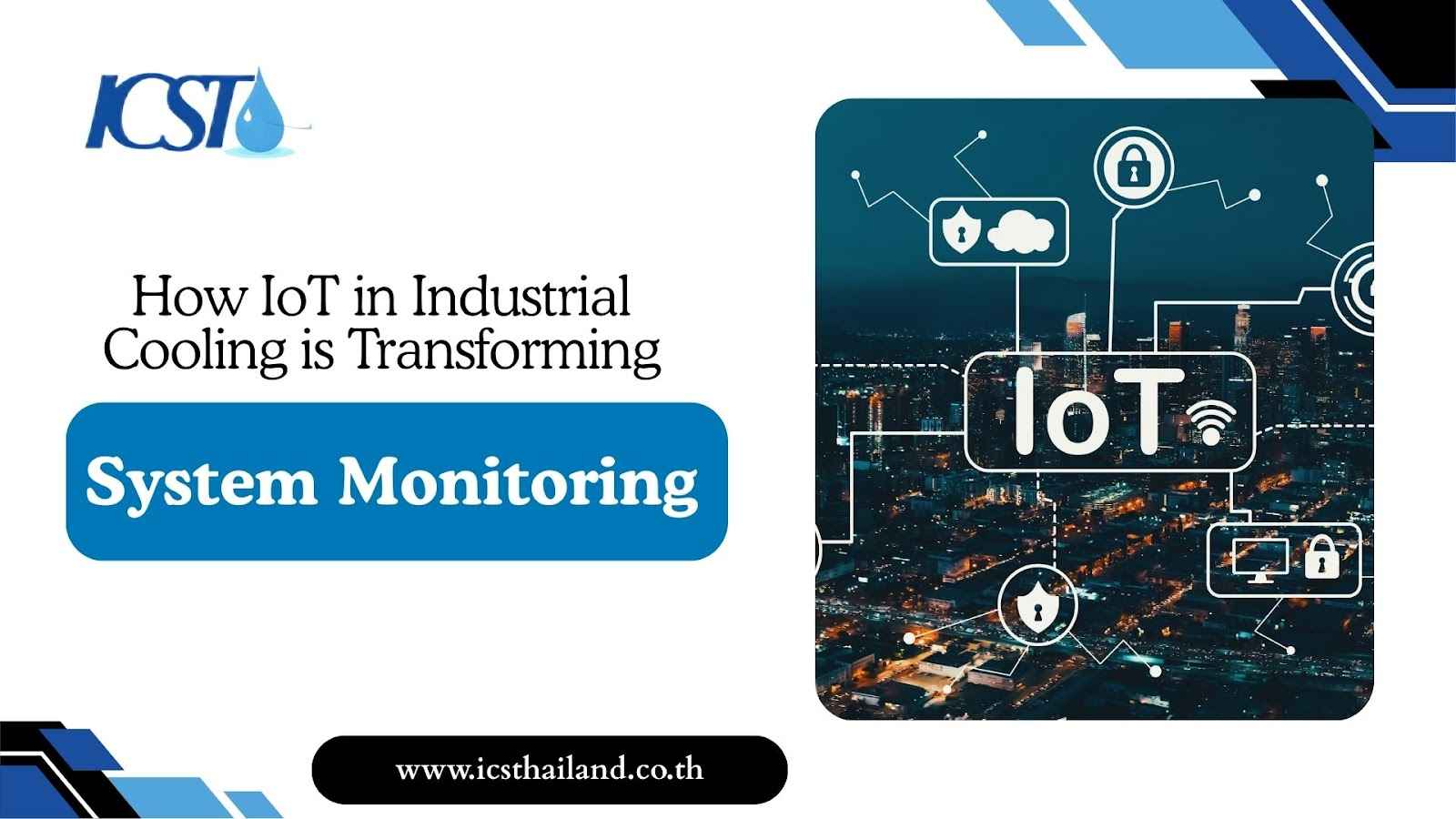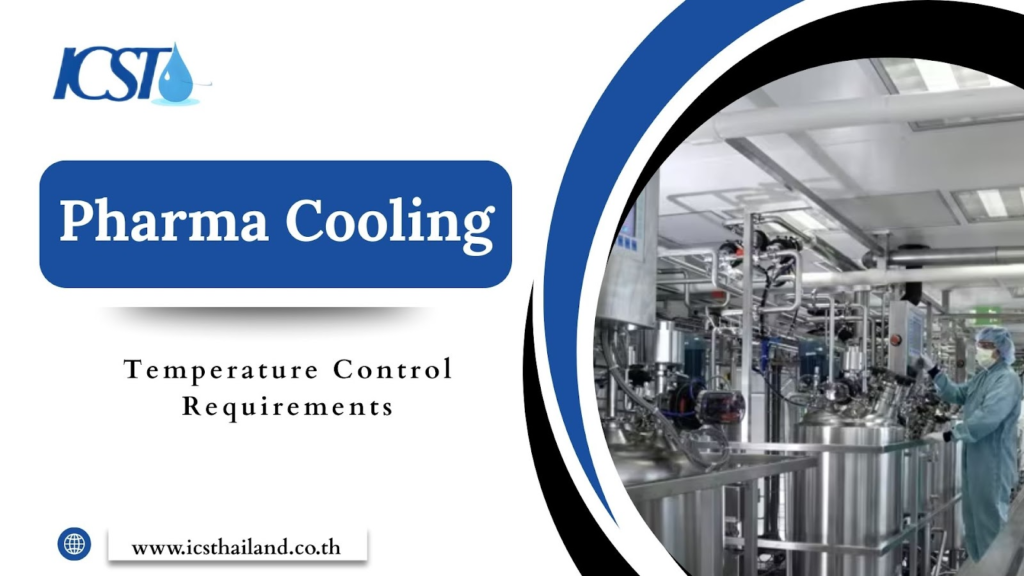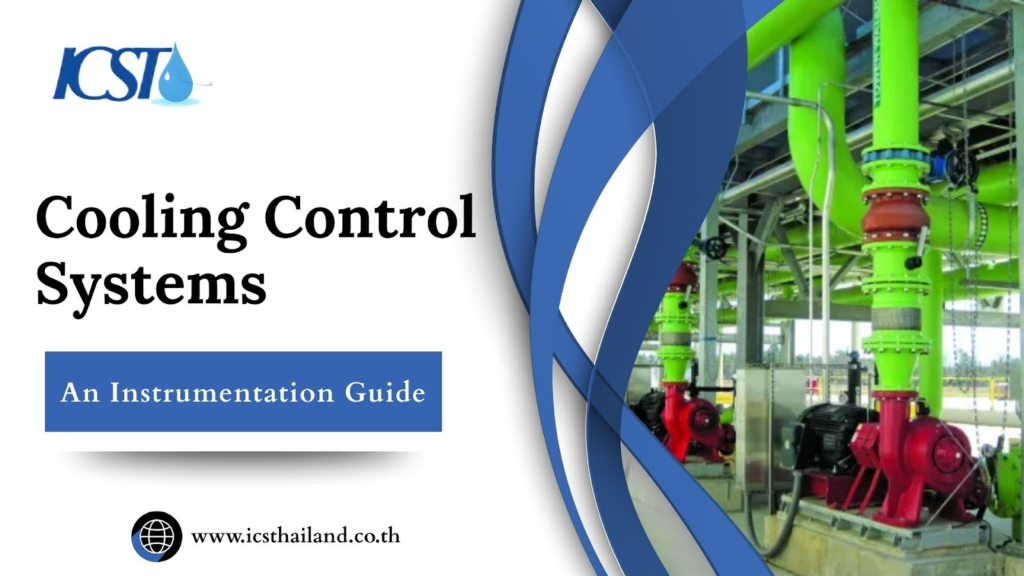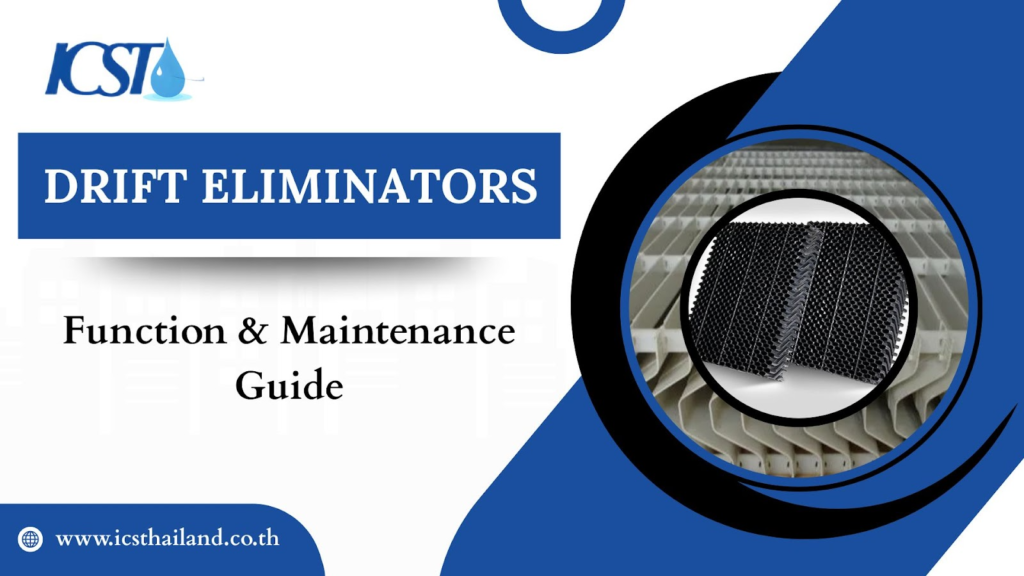Industrial facilities face mounting pressure to optimize their cooling operations. Traditional monitoring methods leave blind spots that cost millions in wasted energy, unplanned downtime, and regulatory penalties.
IoT is transforming the way industrial cooling systems function. By connecting sensors, software, and analytics platforms, facilities gain unprecedented visibility into their cooling infrastructure. This transformation goes beyond simple data collection; it enables predictive maintenance, automated optimization, and real-time decision-making.
This shift from reactive to proactive cooling management highlights the power of IoT in Industrial Cooling. Facilities utilizing IoT monitoring report 10-20% energy savings, lower maintenance costs, and significantly improved system reliability. This technology turns cooling from a cost center into a strategic advantage.
Table of Contents
ToggleThe “Why”: The Imperative for Smarter Cooling
IoT in Industrial Cooling is transforming the way cooling systems operate by addressing inefficiencies and reducing resource consumption. Without proper monitoring, these systems can waste water, consume excessive energy, and experience unexpected failures.
Rising Operational Costs & Efficiency Demands
- Industrial cooling accounts for 30-50% of a facility’s total energy use.
- Small inefficiencies can lead to significant long-term costs.
- Traditional monitoring methods only offer performance snapshots, missing key optimization opportunities.
- IoT sensors provide continuous, detailed data to pinpoint energy waste.
- Real-time insights allow facility managers to address inefficiencies immediately, avoiding delays from utility bills or inspections.
The Drive for Sustainability & Compliance
Environmental regulations continue to tighten worldwide. Facilities must reduce water consumption, minimize chemical discharge, and lower their carbon footprint. Manual monitoring makes compliance challenging and expensive.
Automated water quality monitoring ensures optimal chemical dosing, reducing waste and environmental impact. Real-time energy tracking helps facilities stay within carbon emission limits and qualify for sustainability incentives.
Minimizing Unplanned Downtime & Enhancing Reliability
- Cooling system failures can shut down entire facilities.
- Downtime in manufacturing, pharmaceutical, and data centers can cost thousands of dollars per minute.
- Traditional maintenance schedules often fail to detect issues before catastrophic failures occur.
- IoT monitoring enables condition-based maintenance instead of calendar-based.
- Continuous analysis of equipment health allows maintenance to be scheduled precisely when needed.
- Prevents failures before they disrupt operations.
The IoT Ecosystem in Industrial Cooling
Modern IoT cooling systems combine multiple technologies to create intelligent monitoring networks. Understanding these components helps facilities design effective monitoring strategies.
Smart Sensors
What parameters matter most for cooling system performance? How can facilities monitor equipment health without constant manual inspections?
Smart sensors continuously track critical cooling system parameters:
- A cost-effective solution, ORP (Oxidation-Reduction Potential) sensors track sanitizer effectiveness. Biocide residual sensors optimize chemical treatment.
These wireless sensors operate continuously, providing data points every few seconds rather than weekly or monthly manual readings. The granular data reveals patterns invisible to periodic inspections.
Connectivity & Data Transmission
How is sensor data delivered to facility managers and analytics platforms? Which connectivity options work best in industrial environments?
Reliable data transmission requires robust wireless technologies:
- Wi-Fi Networks: A cost-effective solution for sensors near existing network infrastructure. Ideal for indoor use where signal strength is robust.
- LoRaWAN: Long-range, low-power wireless technology ideal for large facilities. Sensors can transmit data up to several miles with minimal battery consumption.
- Cellular Connectivity: 4G, 5G, NB-IoT, and LTE-M provide reliable connections even in remote locations. Essential for multi-site facilities and outdoor cooling towers.
Gateway devices collect sensor data and securely transmit it to cloud platforms. These gateways often include edge computing capabilities, processing data locally for faster response times.
Cloud Platforms & Analytics
Cloud-based IoT platforms process and analyze continuous data streams:
- Data Storage & Processing: Scalable cloud infrastructure handles millions of data points daily. Past data allows for trend analysis and the creation of predictive models.
- User-Friendly Dashboards: Web and mobile interfaces display key performance indicators in real-time. Customizable alerts notify personnel of critical issues immediately.
- AI/Machine Learning Engines: Advanced algorithms identify patterns in equipment behavior. These systems learn normal operating conditions and flag anomalies that indicate developing problems.
Real-Time Insights: Transforming Monitoring into Action
Raw sensor data becomes valuable only when translated into actionable intelligence. IoT platforms excel at transforming measurements into actionable insights that enhance cooling system performance.
Granular Visibility and Instant Alerts
Traditional monitoring provides monthly or weekly snapshots of system performance. IoT monitoring provides constant access and visibility from any location with an internet connection. Facility managers can monitor multiple sites simultaneously, identifying issues across their entire cooling infrastructure.
- Automated alerts simplify cooling system management by removing guesswork.
- Sensors detect unusual vibrations, temperature spikes, or chemical imbalances.
- Notifications are sent to maintenance teams within minutes.
- Immediate awareness helps prevent minor issues from escalating into major failures.
Predictive Maintenance
How can facilities predict equipment failures before they occur? What patterns indicate developing problems?
- Motor Bearing Wear: Vibration sensors detect subtle changes in bearing signatures weeks before failure. Temperature sensors identify overheating that indicates lubrication problems.
- Pump Cavitation: Flow rate and pressure sensors reveal cavitation conditions that damage pump impellers. Early detection prevents expensive repairs and extends equipment life.
- Heat Exchanger Fouling: Temperature differential sensors identify reduced heat transfer efficiency. This early warning enables cleaning before performance severely degrades.
Studies show predictive maintenance reduces unplanned downtime by 30-50% while extending asset life by 20-25%. The cost savings from preventing failures typically justify IoT implementation within the first year.
Dynamic Optimization
Why run cooling systems at fixed settings when conditions constantly change? How can facilities automatically optimize performance based on real-time conditions?
IoT systems enable dynamic optimization that responds to changing conditions:
- Variable Speed Control: AI algorithms adjust fan and pump speeds based on heat load and ambient conditions. This optimization can reduce energy consumption by 15-30% compared to fixed-speed operation.
- Automated Blowdown Control: Conductivity sensors trigger blowdown cycles only when needed, conserving water while preventing scale formation.
- Precision Chemical Dosing: Water quality sensors enable automated chemical feed systems to maintain optimal treatment levels. This precision reduces chemical costs and environmental impact.
Enhanced Water Management and Safety
Water quality directly impacts cooling system performance and safety. Poor water treatment leads to scale, corrosion, and microbiological growth that can shut down operations and endanger personnel.
- Real-time water quality monitoring ensures optimal treatment conditions.
- pH sensors regulate acidity levels to prevent corrosion.
- ORP sensors confirm sanitizer effectiveness against bacteria like Legionella.
- Conductivity meters monitor mineral concentrations to prevent scaling.
- Continuous monitoring enhances safety and reduces water and chemical usage.
- Facilities achieve water quality with minimal waste, boosting efficiency and supporting environmental goals.
Key Benefits: The Measurable Impact of IoT Monitoring
IoT monitoring delivers quantifiable benefits that improve facility profitability and sustainability. These advantages typically justify implementation costs within 12-18 months.
Significant Energy and Cost Savings
Energy represents the largest operating cost for most cooling systems. IoT optimization can help lower energy usage by 10-20% by enhancing efficiency and minimizing waste.
Water conservation provides additional savings. Precise blowdown control and leak detection can reduce water usage by 15-25%. Chemical optimization cuts treatment costs while improving system performance.
Extended Equipment Lifespan and Reduced Maintenance
Predictive maintenance prevents catastrophic failures that damage expensive equipment. By addressing problems early, facilities extend asset life and reduce replacement costs.
Condition-based maintenance also improves maintenance efficiency. Instead of performing unnecessary service based on calendar schedules, technicians focus on equipment that actually needs attention. This targeted approach reduces labor costs while improving reliability.
Improved Operational Safety and Regulatory Compliance
- Continuous monitoring detects dangerous conditions early, improving safety for personnel.
- Water quality monitoring prevents Legionella growth and other health risks.
- Equipment health monitoring identifies potential failures to avoid accidents.
- Automated data logging streamlines regulatory compliance.
- IoT systems track detailed records of:
- Water treatment
- Energy consumption
- Maintenance activities
Implementing IoT: Challenges and Best Practices
Although IoT offers significant advantages, its successful adoption depends on thorough planning and effective execution. Understanding common challenges helps facilities avoid pitfalls and maximize return on investment.
Common Hurdles: Integration, Security, and Skills
What obstacles prevent successful IoT implementation? How can facilities overcome these challenges?
Common implementation challenges include:
- Data Security: Industrial facilities face increasing cybersecurity threats. IoT devices create additional network entry points that require protection.
- System Integration: Connecting new IoT devices with existing control systems and enterprise software can be complex and expensive.
- Initial Investment: IoT implementation requires upfront capital for sensors, connectivity, and software platforms.
- Skills Gap: Many facilities lack personnel with IoT expertise. Training existing staff or hiring specialists adds to implementation costs.
Strategies for Successful Deployment
How can facilities overcome IoT implementation challenges? What approaches maximize success probability?
Proven strategies for successful IoT deployment include:
- Phased Implementation: Start with pilot projects that demonstrate value quickly. Use initial successes to justify broader deployment.
- Partner Selection: Work with experienced IoT providers who understand industrial cooling applications. Look for partners offering end-to-end solutions rather than point products.
- Cybersecurity Planning: Implement strong data encryption, access controls, and network segmentation from the start. Regular security audits identify and address vulnerabilities.
- Staff Development: Invest in training programs that develop IoT skills within existing teams. Cross-training ensures multiple personnel can manage IoT systems.
The Future Outlook
IoT monitoring is only the first step in the evolution of cooling systems. Emerging technologies promise even greater automation and efficiency improvements.
Edge Computing and Digital Twins
What happens when IoT systems process data locally instead of sending everything to the cloud? How can virtual system models improve cooling management?
Edge computing brings processing power closer to sensors:
- Faster Response: Local data processing reduces latency for time-critical decisions. Emergency shutdowns and safety actions are executed in fractions of a second, not full seconds.
- Reduced Bandwidth: Processing data locally reduces network traffic and connectivity costs. Only processed insights travel to the cloud rather than raw sensor data.
Digital twins create virtual replicas of physical cooling systems. These models use real-time IoT data to simulate system behavior under different conditions. Facilities can test optimization strategies virtually before implementing changes.
Conclusion
IoT monitoring represents the future of industrial cooling management. Facilities that embrace this technology gain competitive advantages through improved efficiency, reduced costs, and enhanced reliability.
The transformation goes beyond simple monitoring. IoT enables predictive maintenance, automated optimization, and data-driven decision-making that was impossible with traditional methods. These capabilities become essential as facilities face increasing pressure to reduce costs, improve sustainability, and maintain reliability.
The question isn’t whether to implement IoT in Industrial Cooling, it’s how quickly facilities can realize these benefits. Early adopters are already seeing significant returns on their IoT investments in industrial cooling while building expertise for future enhancements.
Ready to transform your cooling system monitoring? Contact ICST today for a consultation on implementing cutting-edge IoT solutions tailored to your specific facility requirements.
Frequently asked Questions
How does IoT enable predictive maintenance?
IoT sensors track equipment performance, while AI processes the data to anticipate issues, enabling preventative maintenance and reducing downtime.
What data do IoT sensors collect?
Sensors collect data on temperature, flow, vibration, pressure, energy consumption, and water quality (pH, conductivity, ORP).
How does IoT reduce cooling energy use?
IoT provides real-time data for dynamic optimization, allowing AI to adjust fan and pump speeds to match load, cutting energy waste.
Can IoT improve cooling tower water management?
Yes, IoT monitors water quality for precise, automated blowdown and chemical dosing, minimizing water and chemical usage.
How does IoT boost cooling safety?
IoT continuously monitors equipment and water quality, enabling early detection of mechanical issues or Legionella risks, enhancing safety.








